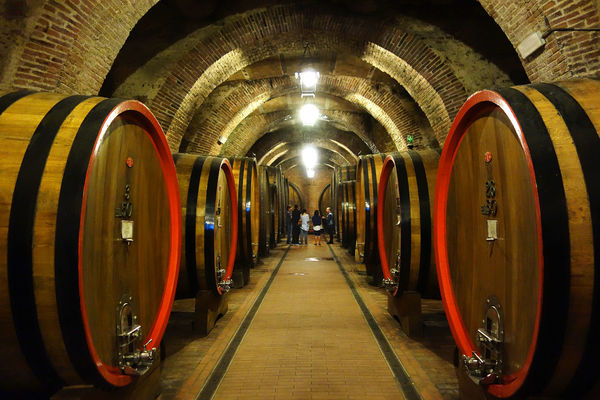From Harvest to Bottle: The Winemaker's Craft in the Cellar

With the grape harvest complete, the vineyard hands off its precious cargo to the cellar, where the transformation from fruit to wine truly begins. The cellar is the heart of the winemaking process, where meticulous decisions and skillful techniques turn ripe grapes into the complex wines we savor. This journey from harvest to bottle is where science meets art, and every step is guided by the winemaker’s vision.
The first task in the cellar is pressing the grapes. For white wines, this process is swift, as the grapes are gently pressed to separate juice from skins, resulting in a light, clear must that’s ready for fermentation. Red wines, on the other hand, are often left to macerate with their skins for a period, allowing time for the extraction of color, tannins, and flavor compounds. This step is crucial for developing the body and depth associated with red wines, and each winemaker chooses the maceration time based on their desired style.
Once the must is prepared, fermentation begins. This stage is where the magic of winemaking happens, as yeast consumes the sugars in the grape juice, converting them into alcohol and releasing aromas that shape the wine’s character. Temperature control is vital during fermentation; white wines typically ferment at cooler temperatures to preserve delicate floral and fruity notes, while reds often ferment warmer to enhance bold flavors and complexity. Some winemakers choose to allow the natural yeasts on the grape skins to start fermentation, which can bring unique, terroir-driven nuances to the wine.
After the primary fermentation, some wines undergo a secondary fermentation, also known as malolactic fermentation (MLF). This process converts the sharper malic acid in the wine into softer lactic acid, resulting in a smoother, creamier texture. MLF is common in red wines and some fuller-bodied white wines, like Chardonnay.
Once fermentation is complete, the wine is transferred to rest and develop. Aging vessels—ranging from stainless steel tanks to oak barrels—play a significant role in the final flavor profile. Stainless steel preserves the wine’s freshness and crispness, ideal for bright, fruit-forward wines. Oak barrels, however, lend additional complexity, imparting flavors like vanilla, spice, and toasted wood. Red wines especially benefit from oak aging, as it helps soften tannins and enhances structure.
The aging period varies greatly depending on the wine style and the winemaker's goals. Some wines, such as Beaujolais Nouveau, are bottled within weeks of harvest to capture their youthful, fruity character. Others, like Bordeaux reds or vintage Champagnes, may age for years, developing depth and elegance that only time can bring.
As the wine reaches its peak, the winemaker decides when it’s ready for bottling. However before bottling, the wine goes through clarification and stabilization to remove any residual solids and prevent unwanted changes over time. This process often involves fining, where substances like egg whites or bentonite clay are added to help bind and settle particles, and filtration, which removes impurities by passing the wine through a fine filter. These essential steps ensure that the wine remains clear and stable, preserving its visual appeal and taste long after it leaves the cellar.
The final step in the wine fermentation cycle is bottling. This is a precise moment, as each bottle captures the culmination of a year’s work in the vineyard and months or even years of patience in the cellar. Bottling marks the end of the journey from vine to glass, but for the wine, it’s just the beginning. Many wines continue to evolve in the bottle, gaining new layers of complexity over time.
With every glass, we’re reminded of the journey that began in the vineyard and continued in the cellar. Each sip tells a story of craftsmanship, tradition, and the beauty of nature’s bounty. Cheers to the winemakers who transform grapes into works of art, and to the wines that bring joy to our tables!
Comments
You know you want to
Sign Up For Our Newsletter
Keep up to date on the latest wine releases, events and promotions.
How long does the process take from harvest to bottle?